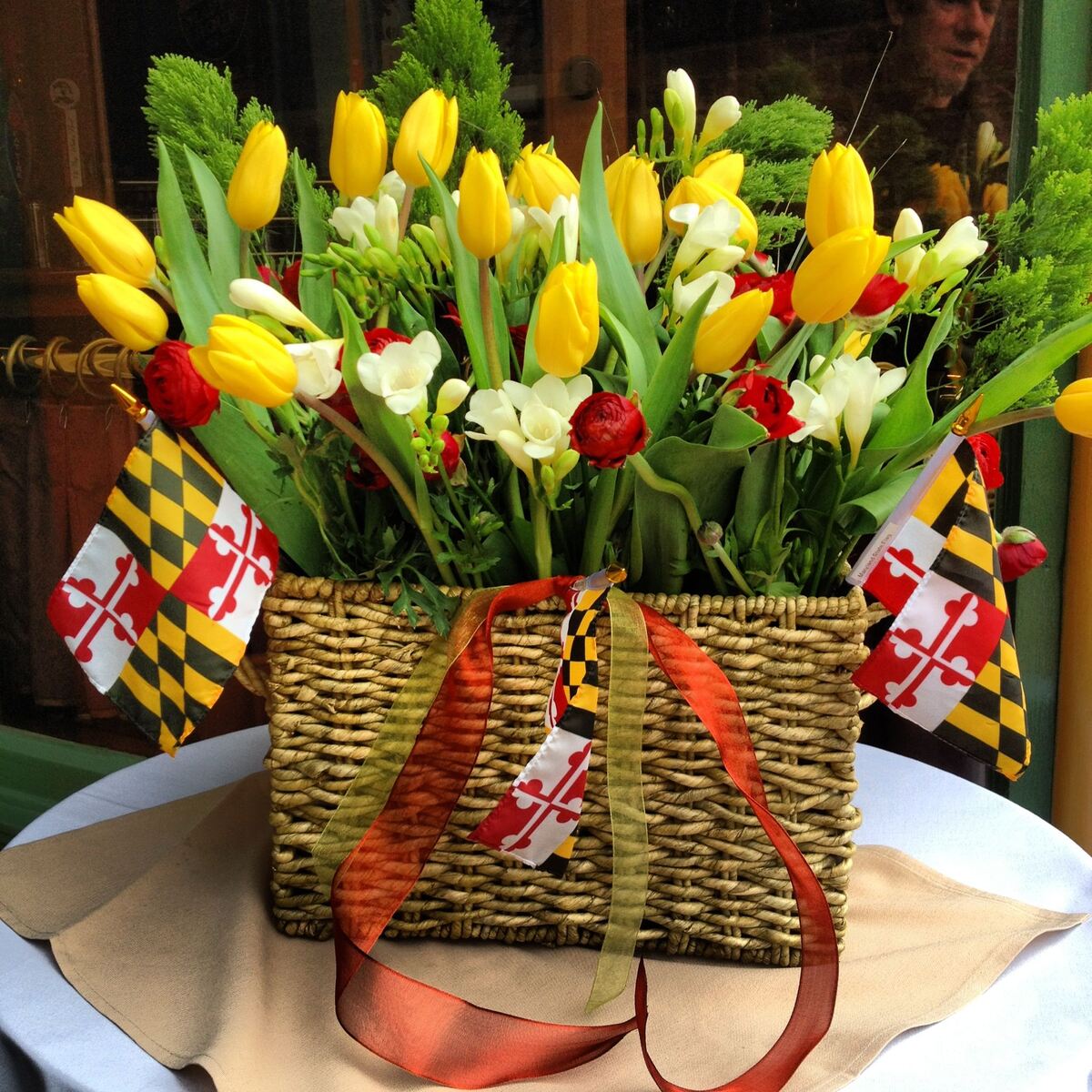Home>Garden Essentials>What Is Greenery Day In Japan, And How Is It Celebrated


Garden Essentials
What Is Greenery Day In Japan, And How Is It Celebrated
Modified: March 7, 2024
Discover the significance of Greenery Day in Japan and learn about the festive celebrations. Enjoy the beauty of nature with garden-themed activities and events.
(Many of the links in this article redirect to a specific reviewed product. Your purchase of these products through affiliate links helps to generate commission for Storables.com, at no extra cost. Learn more)
Introduction
Greenery Day, or “Midori no Hi” in Japanese, is a national holiday in Japan that is dedicated to celebrating and appreciating nature. It is a day for people to immerse themselves in the beauty of the natural world and reflect on the importance of preserving and protecting it.
Originally established in 1989, Greenery Day was held annually on April 29th as a way to honor the birthday of Emperor Showa, who was a passionate advocate for environmental conservation. However, in 2007, Greenery Day underwent some changes as part of a larger overhaul of Japan’s national holidays. Emperor Showa’s birthday was designated as a separate holiday called “Showa Day,” while Greenery Day was moved to May 4th.
The decision to move Greenery Day to May 4th was made with the intention of promoting a longer holiday period known as “Golden Week.” This extended period of consecutive holidays allows people to take a break from their usual routines and spend time reconnecting with nature and enjoying various outdoor activities.
Greenery Day holds a special place in the hearts of the Japanese people as it represents a collective reverence for the environment and a commitment to sustainable living. It serves as a reminder to cherish and protect the lush green landscapes that Japan is renowned for.
Throughout the years, Greenery Day has evolved to become more than just a holiday. It has become a platform for promoting environmental awareness, conservation efforts, and sustainable practices. Let’s explore the historical background, significance, and celebrations associated with this special day.
Key Takeaways:
- Greenery Day in Japan is a special holiday that celebrates nature, promotes environmental awareness, and encourages sustainable practices through activities like planting, gardening, and nature appreciation.
- The holiday also includes traditions like symbolic plant and flower exchanges, wearing green attire, and attending festivals and parades that showcase the beauty of greenery and promote environmental stewardship.
Historical Background of Greenery Day
The roots of Greenery Day can be traced back to the reign of Emperor Showa, also known as Hirohito, who was the emperor of Japan from 1926 until his death in 1989. Emperor Showa had a deep appreciation for nature and was an avid botanist. He believed that fostering a strong connection with the natural world was vital for the well-being of both individuals and society as a whole.
In honor of Emperor Showa’s contributions to environmental conservation and his love for plants, Greenery Day was established as a national holiday in 1989, coinciding with his birthday on April 29th. The purpose of Greenery Day was to encourage people to embrace nature, engage in eco-friendly practices, and promote the preservation of Japan’s natural beauty.
Before long, Greenery Day became more than just a celebration of Emperor Showa’s passion for greenery. It evolved into a symbol of environmental consciousness and a reminder of the importance of sustainable living. The day served as a prompt for individuals and communities to reflect on their connection to the natural world and take steps to protect it.
In 2007, a significant change occurred in Japan’s national holidays, resulting in the relocation of Greenery Day to May 4th. The decision was made to provide a more substantial holiday period called Golden Week, which incorporates multiple holidays in quick succession. As part of this restructuring, April 29th was designated as Showa Day, a separate holiday dedicated solely to Emperor Showa.
This change allowed Greenery Day to focus solely on environmental appreciation and conservation, further emphasizing its significance as a day dedicated to celebrating nature and raising awareness about the need for sustainability.
Today, Greenery Day continues to honor the legacy of Emperor Showa and his commitment to environmental conservation. It serves as a call to action for individuals, communities, and organizations to come together and work towards preserving and restoring the natural environment.
Now that we understand the historical background of Greenery Day, let’s explore its significance and purpose in more detail.
Significance and Purpose of Greenery Day
Greenery Day holds immense significance in Japanese culture as it encompasses the values of environmental stewardship, appreciation for nature, and sustainable living. The purpose of this national holiday is to encourage individuals and communities to engage in activities that promote a deep connection with the natural world and inspire a sense of responsibility towards protecting the environment.
One of the main purposes of Greenery Day is to raise awareness about the importance of preserving Japan’s rich and diverse natural landscapes. From its lush forests and picturesque gardens to its beautiful cherry blossoms and vibrant autumn foliage, Japan is known for its stunning greenery. Greenery Day serves as a reminder to cherish and protect these natural wonders, ensuring their preservation for future generations to enjoy.
Additionally, Greenery Day aims to promote environmental education and encourage sustainable practices. It provides an opportunity for individuals to reflect on their daily actions and make conscious choices that have a positive impact on the environment. The day serves as a catalyst for initiating conversations about environmental issues, such as climate change, pollution, and habitat destruction.
Another significant aspect of Greenery Day is its role in promoting a sense of well-being and harmony with nature. Studies have shown that spending time in natural environments has numerous physical and mental health benefits. Greenery Day encourages people to get outdoors, breathe in the fresh air, and engage in activities that rejuvenate the mind and body.
Moreover, Greenery Day plays a crucial role in fostering a sense of community and unity among people. Various events and celebrations take place on this day where individuals come together to participate in gardening activities, plant trees, and organize environmental clean-ups. These collective efforts not only improve the local environment but also strengthen bonds within the community.
By dedicating a special day to celebrate greenery and nature, Greenery Day serves as a powerful reminder of the interconnectedness between humans and the environment. It reinforces the idea that every individual has a role to play in preserving and protecting the earth. Through its significance and purpose, Greenery Day inspires a sense of responsibility, fosters environmental consciousness, and promotes a sustainable and balanced way of life.
Now that we have explored the significance and purpose of Greenery Day, let’s delve into the celebrations and activities that take place on this special day.
Greenery Day Celebrations and Activities
Greenery Day is a time for the Japanese people to engage in various celebrations and activities that promote a deep appreciation for nature and environmental conservation. From planting events to visiting parks and participating in outdoor festivities, there are numerous ways to celebrate and honor the importance of greenery.
1. Planting and Gardening Events:
Greenery Day provides the perfect opportunity for individuals and communities to engage in planting and gardening activities. Many municipalities organize tree-planting events where participants gather to plant trees in public spaces, ensuring the growth and conservation of green areas. Additionally, people take this day as a chance to tend to their home gardens, nurturing plants and flowers to enhance their surroundings.
2. Visiting Parks and Gardens:
Another popular activity on Greenery Day is visiting parks, gardens, and nature reserves. Japan is renowned for its beautiful parks and botanical gardens, which showcase a breathtaking array of flowers and foliage. On this special day, people flock to these serene spaces to immerse themselves in the tranquility of nature, take leisurely walks among the greenery, and enjoy the vibrant colors of blossoms.
3. Nature Appreciation Activities:
Greenery Day is also an opportunity for individuals to get closer to nature and appreciate its wonders through various nature appreciation activities. Families often organize picnics in parks or forests, allowing them to spend quality time surrounded by green landscapes. Some people opt for hiking or camping trips, exploring the countryside and taking in the beauty of mountains, rivers, and forests.
4. Environmental Awareness Campaigns:
In conjunction with Greenery Day, numerous environmental organizations and government agencies organize awareness campaigns and educational programs. These initiatives aim to educate the public about the importance of environmental conservation, waste reduction, recycling, and sustainable practices. Workshops, seminars, and exhibitions are held to raise awareness and provide individuals with practical tools for living an eco-friendly lifestyle.
5. Symbolic Plant and Flower Exchanges:
On Greenery Day, it is common to exchange plants and flowers as a way to symbolize the love and appreciation for greenery. People gift each other potted plants or bouquets, fostering a sense of connection with nature and expressing gratitude for its beauty. This tradition also represents the importance of nurturing and caring for the environment.
Greenery Day celebrations are not limited to these activities alone, as diverse events and festivities take place throughout Japan. From community festivals and parades to art exhibitions and cultural performances, there are numerous opportunities for individuals to come together and celebrate the beauty and significance of greenery.
Now that we have explored the various celebrations and activities associated with Greenery Day, let’s take a closer look at some of the traditions and customs observed on this special day.
Planting and Gardening Events
Planting and gardening events are a significant part of the Greenery Day celebrations in Japan. These activities provide opportunities for individuals and communities to actively participate in the conservation and beautification of their surroundings.
One of the key objectives of Greenery Day is to promote the importance of green spaces and encourage sustainable practices. Planting events play a crucial role in achieving these goals by engaging people in the act of planting trees, flowers, and other foliage.
Many municipalities and local organizations organize tree-planting campaigns on Greenery Day. These initiatives involve individuals of all ages, from school children to senior citizens, coming together to plant trees in designated areas. Not only does this contribute to the expansion of green spaces, but it also helps to create a sense of community and environmental consciousness.
Gardening events are equally popular on Greenery Day. Many people take advantage of this holiday to tend to their gardens, plant new flowers, and nurture existing plant life. It is a time for individuals to reconnect with nature and take pride in maintaining their own green spaces.
Community gardens also play a significant role in Greenery Day celebrations. These shared spaces give neighbors and individuals who may not have access to private gardens the chance to come together and cultivate plants and vegetables. It fosters a sense of collaboration and teaches valuable gardening skills while promoting sustainable living.
Greenery Day planting and gardening events go beyond the act of planting itself. They also serve as educational platforms, providing information on proper planting techniques, soil conservation, and sustainable gardening practices. Participants learn about the importance of choosing native plants, managing water resources efficiently, and creating habitats for local wildlife.
These events often feature workshops and demonstrations led by gardening experts and environmental organizations. Participants gain valuable knowledge on topics such as composting, organic gardening, and pest management, empowering them to make more environmentally-friendly choices in their own gardens.
Furthermore, planting and gardening events on Greenery Day have a long-lasting impact. The trees and plants that are planted on this day continue to grow and thrive, providing numerous environmental benefits such as improving air quality, reducing soil erosion, and providing habitats for wildlife.
Overall, Greenery Day planting and gardening events bring communities together, instill a sense of responsibility towards the environment, and inspire individuals to pursue sustainable practices in their own lives. By actively participating in these activities, people contribute to the preservation and enhancement of Japan’s green landscapes while enjoying the therapeutic benefits of connecting with nature.
Now that we have explored planting and gardening events, let’s move on to discover the joy of visiting parks and gardens on Greenery Day.
Read more: What Are The Table Manners In Japan?
Visiting Parks and Gardens
Visiting parks and gardens is a cherished tradition on Greenery Day in Japan. It is a time when people venture out to immerse themselves in the splendor of nature and find solace in the tranquil and vibrant surroundings.
Japan is renowned for its breathtaking parks, botanical gardens, and green spaces that showcase the country’s natural beauty. Greenery Day provides the perfect occasion for individuals and families to explore these stunning landscapes, appreciate the diverse flora, and experience the therapeutic benefits of being in nature.
One popular destination on Greenery Day is Shinjuku Gyoen National Garden, located in the heart of Tokyo. With its vast expanses of cherry blossom trees, meticulously manicured lawns, and peaceful ponds, it offers an oasis of serenity amidst the bustling city. Visitors can stroll along the numerous walking paths, take in the vibrant colors of the seasonal blooms, and enjoy a leisurely picnic surrounded by greenery.
Kyoto, known for its rich cultural heritage, offers magnificent gardens that are especially enchanting during Greenery Day. The beautiful Kiyomizu-dera Temple, with its traditional Japanese garden and stunning views of the city, is a popular choice for visitors seeking a serene and verdant retreat. Similarly, the famous Arashiyama Bamboo Grove in Kyoto provides a unique and atmospheric experience, with towering bamboo trees creating a sense of tranquility and natural beauty.
In addition to these well-known parks and gardens, there are countless local and regional green spaces throughout Japan that offer a peaceful and invigorating escape. From the Hokkaido Garden Path in northern Japan to the Okinawa Prefectural Peace Memorial Park in the south, each region boasts its own natural wonders and inviting landscapes.
Greenery Day is an opportunity for visitors to connect with nature on a deeper level, whether by taking a leisurely stroll through a garden path, breathing in the fragrance of blooming flowers, or admiring the vibrant hues of autumn foliage. The visitation of these parks and gardens on Greenery Day reinforces the significance of greenery in Japanese culture and highlights the importance of preserving and protecting these natural treasures.
Many parks and botanical gardens organize special events and exhibitions on Greenery Day to heighten visitors’ experiences. These can include concerts, art exhibitions, nature workshops, and guided tours led by knowledgeable staff. These activities enhance visitors’ understanding of the biodiversity, history, and ecological importance of the park or garden they are exploring.
Greenery Day provides an opportunity for people to reconnect with nature, recharge their spirits, and find inspiration in the beauty that surrounds them. Whether it’s a quiet moment of reflection, a family outing, or a chance to capture stunning photographs, visiting parks and gardens on Greenery Day allows individuals to appreciate the power and serenity of the natural world.
As Greenery Day celebrates the importance of green spaces, let’s now explore the various nature appreciation activities that take place on this special day.
Greenery Day in Japan is a national holiday to appreciate nature and the environment. It is celebrated on May 4th with tree planting, nature walks, and outdoor activities.
Nature Appreciation Activities
Greenery Day in Japan is not only about planting and gardening; it is also a time to engage in nature appreciation activities. It is an opportunity for individuals to reconnect with the natural world, immerse themselves in its beauty, and find solace in its tranquility. From picnics in parks to hiking through scenic landscapes, there are a variety of activities that allow people to appreciate and experience the wonders of nature.
One popular way to appreciate nature on Greenery Day is by organizing picnics in parks or open green spaces. Families and friends gather together, sharing meals amidst the lush surroundings, and taking in the peaceful ambiance. This cherished tradition allows people to relax, bond with loved ones, and enjoy the beauty of the outdoors.
Hiking and exploring nature trails is another common activity on Greenery Day. Japan is blessed with mountains, forests, and picturesque landscapes, providing ample opportunities for outdoor enthusiasts to immerse themselves in nature. Many people take advantage of the holiday to embark on hiking adventures, experiencing the serenity and grandeur of Japan’s natural beauty.
Photography enthusiasts are drawn to Greenery Day as it offers the perfect backdrop for capturing stunning images of Japan’s flora and fauna. From capturing the delicate petals of cherry blossoms in full bloom to photographing the vibrant colors of autumn foliage, nature photography on Greenery Day allows individuals to document the splendor of the changing seasons.
Birdwatching is also a popular nature appreciation activity on Greenery Day. Japan is home to a wide variety of bird species, and avid birdwatchers take this opportunity to observe and identify different birds in their natural habitats. Many parks and wildlife reserves offer designated birdwatching areas where enthusiasts can set up their binoculars and patiently wait for the opportunity to spot rare or migratory species.
Visiting natural landmarks, such as waterfalls, lakes, and mountains, is another way to appreciate nature on Greenery Day. These awe-inspiring locations allow individuals to witness the raw power and beauty of the natural world. Whether marveling at the cascading waters of Kegon Falls or enjoying the tranquility of Lake Towada, these natural landmarks offer a deeper appreciation for the magnificence of the earth.
Artistic expression also finds its place on Greenery Day, with some individuals engaging in plein air painting or sketching activities. Whether capturing the scenic landscapes or focusing on intricate details of flowers and plants, these creative endeavors allow artists to connect with nature on a profound level and express their admiration through their artwork.
By participating in nature appreciation activities on Greenery Day, individuals can find solace, inspiration, and a renewed sense of connection with the natural world. These activities not only provide a break from the daily hustle and bustle but also remind us of the importance of preserving and protecting the environment for generations to come.
As environmental consciousness plays a vital role in Greenery Day, let’s now explore the environmental awareness campaigns that take place on this special day.
Environmental Awareness Campaigns
Greenery Day in Japan goes beyond celebrating nature; it also serves as a platform for promoting environmental awareness and encouraging sustainable practices. Various organizations, government agencies, and environmental groups organize awareness campaigns and initiatives on this special day to educate the public and inspire them to take action for a greener future.
One of the main goals of environmental awareness campaigns on Greenery Day is to educate individuals about the pressing environmental issues facing Japan and the world. Workshops, seminars, and exhibitions are held to provide valuable information on topics such as climate change, deforestation, pollution, and waste management. These initiatives aim to raise awareness about the impact of human activities on the environment and motivate individuals to adopt more sustainable lifestyles.
These campaigns also focus on encouraging waste reduction and recycling practices. Greenery Day serves as an opportunity to educate individuals on the importance of reducing waste, reusing materials, and recycling to minimize the burden on landfills and conserve resources. Workshops and demonstrations on composting, upcycling, and proper recycling techniques are organized to provide practical tools for individuals to implement in their daily lives.
Furthermore, environmental awareness campaigns on Greenery Day emphasize the significance of conserving energy and promoting renewable energy sources. Discussions and presentations on energy-saving techniques, such as using energy-efficient appliances and adopting sustainable transportation options, aim to inspire individuals to make conscious choices that reduce their carbon footprint.
Greenery Day also encourages people to reassess their consumption patterns and make eco-friendly choices. Campaigns promote the use of environmentally-friendly products and sustainable materials, such as biodegradable packaging and organic fabrics. By raising awareness about the impact of consumerism on the environment, these initiatives seek to shift societal attitudes towards more conscious and responsible consumption habits.
Environmental awareness campaigns on Greenery Day often collaborate with educational institutions, local communities, and businesses to maximize their impact. Schools organize special events and workshops to instill environmental values in students, encouraging them to become future stewards of the environment. Local businesses partake in these campaigns by adopting eco-friendly practices, organizing green initiatives, and endorsing sustainable products.
These campaigns also seek to foster a sense of environmental responsibility and collective action. Individuals are encouraged to engage in volunteer activities, such as environmental clean-ups, tree-planting drives, and river restorations, to actively contribute to the preservation of natural environments. By coming together as a community, these initiatives prioritize the importance of collective efforts in creating a sustainable future.
Overall, environmental awareness campaigns on Greenery Day in Japan aim to create a shift in mindset and behavior towards more sustainable practices. By educating individuals, promoting eco-friendly choices, and encouraging collective action, these campaigns play a vital role in raising environmental consciousness and motivating people to protect and preserve the natural world.
With a focus on environmental awareness, let’s now explore the tradition of symbolic plant and flower exchanges on Greenery Day.
Symbolic Plant and Flower Exchanges
One of the cherished traditions on Greenery Day in Japan is the exchange of plants and flowers as symbolic gestures of love, appreciation, and gratitude for greenery. This tradition represents the deep connection between humans and the natural world, and the importance of nurturing and caring for the environment.
On Greenery Day, it is common for individuals to exchange potted plants, flower bouquets, or even seeds as gifts. The choice of plants and flowers varies, but they are often selected for their symbolic meanings. For example, cherry blossoms represent the transient beauty of nature, while bamboo symbolizes strength, resilience, and flexibility.
By exchanging plants and flowers, individuals express their appreciation for nature’s beauty and acknowledge its influence on their lives. It serves as a reminder of the impact that greenery has on our well-being, both physically and emotionally. These exchanges also facilitate conversations about environmental conservation and the need to protect and preserve the natural world.
Symbolic plant and flower exchanges on Greenery Day extend beyond personal gestures; they also occur on a larger scale in communities and organizations. Many workplaces, schools, and public institutions participate in these exchanges, creating a festive atmosphere and promoting a sense of responsibility towards the environment.
These exchanges often take place during Greenery Day events and festivals, where vendors offer a wide array of plants and flowers for purchase or exchange. Additionally, local markets and flower shops participate in the tradition by providing specially curated selections of plants and flowers that are meaningful and representative of the occasion.
Symbolic plant and flower exchanges not only promote environmental consciousness but also stimulate creativity and encourage gardening as a hobby. It inspires individuals to learn about different plant species, explore gardening techniques, and gain a deeper appreciation for the nurturing process.
This tradition also emphasizes the importance of passing down knowledge and fostering a love for greenery. Parents and grandparents often gift potted plants or teach gardening skills to younger generations, instilling a sense of responsibility and care for the environment from an early age.
Furthermore, symbolic plant and flower exchanges provide an opportunity for individuals to create green spaces in their homes and offices. Indoor plants not only enhance the aesthetic appeal but also improve air quality and contribute to a healthier living and working environment.
The exchange of plants and flowers on Greenery Day is not limited to physical items. Some individuals exchange seeds, representing the potential for growth and the commitment to nurturing plants from their very beginnings. This practice promotes sustainability and encourages individuals to engage in gardening, contributing to the greening of their surroundings.
Overall, symbolic plant and flower exchanges on Greenery Day in Japan encapsulate the deep reverence for nature and its significance in our lives. Through these gestures, individuals express their gratitude, love, and responsibility towards the environment. It is a tradition that fosters environmental consciousness, promotes the joy of gardening, and strengthens the connection between humans and the natural world.
Now that we have explored the tradition of plant and flower exchanges, let’s delve into the customs and traditions associated with Greenery Day.
Read more: What Hand Tools Are Popular In Japan
Greenery Day Traditions and Customs
Greenery Day in Japan is more than just a national holiday; it is a time when special traditions and customs are observed to honor nature, promote environmental consciousness, and celebrate the beauty of greenery.
One of the longstanding traditions during Greenery Day is the practice of shakkei, which translates to “borrowed scenery.” This concept involves designing gardens in a way that incorporates the surrounding landscape, such as distant mountains or neighboring buildings, to create a harmonious and seamless view. Shakkei exemplifies the Japanese appreciation for the interconnectedness of nature and the integration of human-made elements with the natural environment.
In many households, it is customary to display flowers and potted plants in the home on Greenery Day. This not only adds beauty to the living space but also serves as a reminder of the importance of greenery and the need to nurture and care for plants. It is common for families to take extra care in tending to these plants on this special day, symbolizing their commitment to environmental stewardship.
Greenery Day is also a time for reflection and gratitude. Individuals may take a moment to contemplate their relationship with nature and express gratitude for the gifts it provides. This can be done through meditation, prayer, or simply spending time in nature, enjoying its tranquility and acknowledging its role in our well-being.
Many schools and educational institutions incorporate environmental themes into their curriculum leading up to Greenery Day. Students learn about the importance of greenery, the impact of human activities on the environment, and the significance of conservation efforts. Classroom activities may involve planting trees, creating artwork inspired by nature, and participating in eco-friendly projects that raise awareness about sustainable living.
Another custom observed on Greenery Day is the wearing of green clothing or accessories. This simple gesture pays homage to the theme of the day and expresses unity in celebrating the natural world. It is not uncommon to see individuals and families donning green attire as they participate in outdoor activities or attend Greenery Day festivals and events.
Attending Greenery Day festivals and parades is also a popular tradition. These celebrations feature various activities, including music performances, dance presentations, art exhibitions, and cultural events. They provide a vibrant and festive atmosphere where communities come together to express their love for greenery, enjoy nature-themed performances, and engage in sustainable practices.
Furthermore, Greenery Day is a time when environmental organizations and government agencies organize exhibitions and seminars to promote sustainable practices and showcase innovative approaches to environmental conservation. These events provide opportunities for individuals to learn about eco-friendly technologies, alternative energy sources, and practices that can be implemented in their daily lives.
Greenery Day customs and traditions vary throughout Japan, as each region often adds its own unique touch to the celebrations. From traditional ceremonies at shrines and temples to local festivals highlighting local flora and fauna, these customs reflect the deep connection between communities and the natural landscapes that surround them.
Through these time-honored traditions and customs, Greenery Day fosters a deep appreciation for nature, promotes sustainable practices, and reinforces the importance of environmental stewardship. It is a holiday that encourages individuals to reflect on their relationship with the natural world and to strive for a harmonious coexistence with the environment.
Now that we have explored the traditions and customs associated with Greenery Day, let’s conclude our journey through this special holiday.
Commemorative Festivals and Parades
Commemorative festivals and parades are a vibrant and integral part of Greenery Day celebrations in Japan. These events bring communities together to honor the beauty of greenery, showcase local traditions, and promote environmental awareness and conservation.
Greenery Day festivals and parades offer a wide range of activities, entertainment, and cultural experiences that capture the essence of this special holiday. They feature vibrant displays of flowers, elaborate costumes, music performances, and traditional dances that celebrate the natural world.
One of the highlights of these festivals is the magnificent flower displays. Elaborate arrangements of blossoms, often themed around the season, create a visual spectacle that delights visitors. From intricate floral sculptures to vibrant displays of cherry blossoms, these exhibitions showcase the diversity and splendor of Japan’s flora and fauna.
Festivals and parades often incorporate traditional dances and performances that pay homage to nature. From elegant fan dances that mimic the movements of flowers in the wind to lively processions featuring musicians and performers dressed as natural elements, these cultural expressions serve as a reminder of the deep connection between the Japanese people and the natural world.
Local communities take pride in showcasing their regional traditions during Greenery Day festivals and parades. These celebrations often include performances of traditional music, crafts, and games that reflect the unique history and culture of each area. People of all ages and backgrounds come together to participate, fostering a sense of unity and community spirit.
Environmental education and awareness are key components of commemorative festivals and parades. Interactive exhibits, informative displays, and talks on environmental topics are organized to engage festival-goers and promote a deeper understanding of the importance of greenery and sustainable practices.
Greenery Day parades showcase elaborate floats adorned with vibrant flowers and greenery. These processions travel through streets, accompanied by music and cheering. The floats often depict scenes from nature or commemorate historical figures who made significant contributions to environmental conservation. These parades create a festive atmosphere and attract locals and tourists alike.
Greenery Day festivals and parades provide a platform for local businesses, artisans, and producers to showcase “green” and eco-friendly products and services. Food vendors offer delicious organic and locally sourced dishes, while artisans display crafts made from sustainable materials. This emphasis on eco-conscious choices promotes sustainable living and supports local businesses that prioritize environmental conservation.
Participation in commemorative festivals and parades encourages individuals of all ages to engage in environmental activism and promote the importance of greenery. Community-driven initiatives such as tree planting, cleaning campaigns, and fundraisers for environmental organizations often accompany these events. People come together to demonstrate their commitment to sustainable practices and a greener future.
Attending Greenery Day festivals and parades allows individuals to immerse themselves in the beauty, culture, and interconnectedness of nature. It showcases the diverse ways in which communities honor and appreciate greenery, while also encouraging discussions about environmental issues and inspiring collective action towards a more sustainable world.
As the festivities of Greenery Day come to a close, let’s reflect on the significance of this holiday and the valuable lessons it teaches us about cherishing and preserving the natural world.
Conclusion
Greenery Day in Japan is a special holiday that celebrates the beauty of nature, promotes environmental awareness, and encourages sustainable practices. From its historical background rooted in Emperor Showa’s love for greenery to the customs and traditions observed on this day, Greenery Day holds immense significance in Japanese culture.
Throughout the years, Greenery Day has evolved to become much more than a national holiday. It has become an opportunity for individuals and communities to come together and reflect on their connection with the natural world. The celebrations and activities surrounding Greenery Day highlight the importance of green spaces, conservation efforts, and environmental stewardship.
Planting and gardening events allow people to actively participate in the preservation of green environments, while visiting parks and gardens offers an opportunity to immerse themselves in the tranquility and beauty of nature. Nature appreciation activities, such as picnics, hiking, and birdwatching, provide moments of reflection and fulfillment while fostering a sense of unity with the environment.
Environmental awareness campaigns encourage individuals to make sustainable choices and take responsibility for preserving the planet. These initiatives promote waste reduction, energy conservation, and conscious consumerism. Symbolic plant and flower exchanges symbolize gratitude and love for nature, highlighting the need to nurture and care for the environment.
Greenery Day also honors traditions and customs, such as shakkei (borrowed scenery), the display of flowers and plants in homes, and the wearing of green attire. The commemorative festivals and parades bring communities together, showcasing the beauty of greenery through floral displays, traditional dances, and cultural performances.
Overall, Greenery Day serves as a reminder to cherish and protect the natural world. It encourages individuals to develop a deep appreciation for green spaces, foster environmental consciousness, and promote sustainable practices in their daily lives.
As we reflect on the significance of Greenery Day, let us carry the lessons learned into our lives and strive to forge a harmonious coexistence with nature. By embracing the values of preservation and environmental stewardship, we can contribute to a greener, more sustainable future for generations to come.
Frequently Asked Questions about What Is Greenery Day In Japan, And How Is It Celebrated
Was this page helpful?
At Storables.com, we guarantee accurate and reliable information. Our content, validated by Expert Board Contributors, is crafted following stringent Editorial Policies. We're committed to providing you with well-researched, expert-backed insights for all your informational needs.














0 thoughts on “What Is Greenery Day In Japan, And How Is It Celebrated”